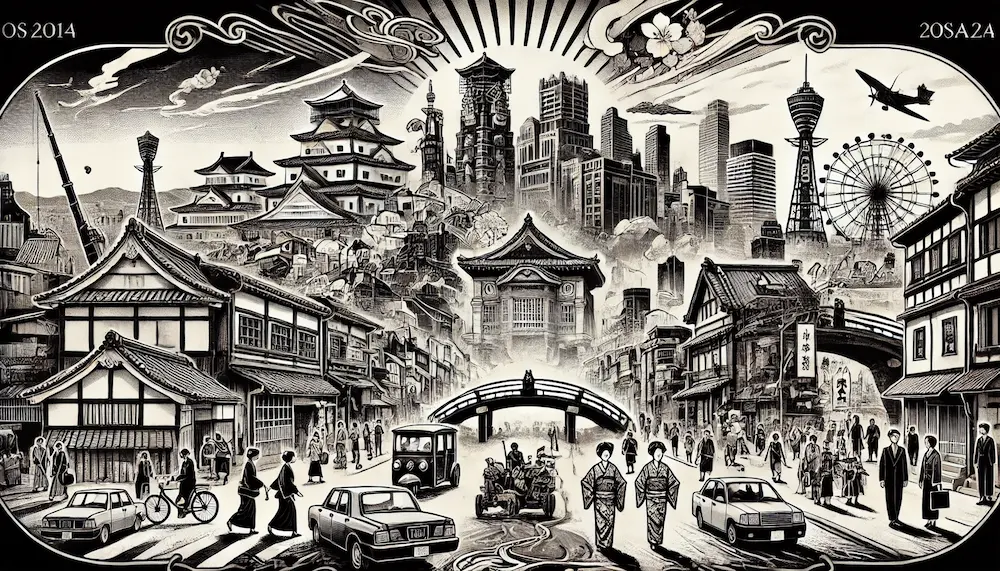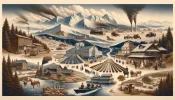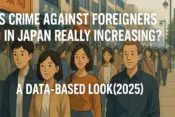Osaka in the Taisho and Showa Periods: A Journey Through Time
Osaka underwent significant transformations during the Taisho and Showa periods, playing a crucial role in shaping modern Japan. From the rise of Taisho Democracy and cultural flourishing to the devastation of war and the post-war economic boom, Osaka’s history during these eras provides a fascinating insight into the city’s resilience and growth.
Taisho Democracy and Osaka’s Cultural Flourishing
The Taisho period (1912–1926) was marked by the Taisho Democracy movement, which brought political and social changes to Japan. In Osaka, this era saw a flourishing of arts, literature, and social movements. The city became a hub for new ideas, with theaters, art galleries, and literary circles thriving. Figures such as writers and intellectuals played a key role in shaping Osaka’s cultural landscape during this time. This period laid the groundwork for the vibrant cultural scene that Osaka is known for today.
War and Reconstruction in Osaka (Showa Period)
The Showa period (1926–1989) brought both hardship and renewal to Osaka. During World War II, Osaka suffered extensive damage from bombings, which destroyed much of the city’s infrastructure and buildings. However, the post-war period marked a time of reconstruction and resilience. The government and local communities worked together to rebuild the city, focusing on restoring its economic vitality and cultural heritage. Despite the devastation, Osaka’s spirit remained unbroken, and the city emerged stronger than before, becoming a symbol of Japan’s post-war recovery.
Post-War Economic Growth and Urbanization
The post-war period saw Osaka become a key player in Japan’s economic miracle. The city experienced rapid industrialization and urbanization, with new infrastructure projects transforming its landscape. The development of transportation networks, commercial centers, and residential areas supported Osaka’s growing population and economy. As Japan’s economy boomed, Osaka’s role as a commercial powerhouse was solidified, with the city becoming a center for trade, manufacturing, and innovation. This era also brought significant social changes, as the city’s residents adapted to new lifestyles and cultural shifts.
Legacy of the Taisho and Showa Eras
The impact of the Taisho and Showa periods on Osaka can still be felt today. The cultural and economic developments of these eras continue to influence the city’s modern identity. Historical sites, museums, and preserved neighborhoods serve as reminders of Osaka’s rich heritage. These periods also taught valuable lessons about resilience, adaptation, and the importance of community in the face of adversity. Exploring Osaka’s history from the Taisho and Showa periods offers a deeper understanding of how the city became the vibrant metropolis it is today.
Conclusion
Osaka’s journey through the Taisho and Showa periods is a testament to its resilience and ability to adapt to changing times. From the cultural blossoming of the Taisho era to the challenges and triumphs of the Showa period, Osaka’s history during these times has shaped its modern identity. For those interested in exploring Osaka’s rich past, visiting historical sites and learning about these pivotal periods offers a unique insight into the city’s enduring legacy.









